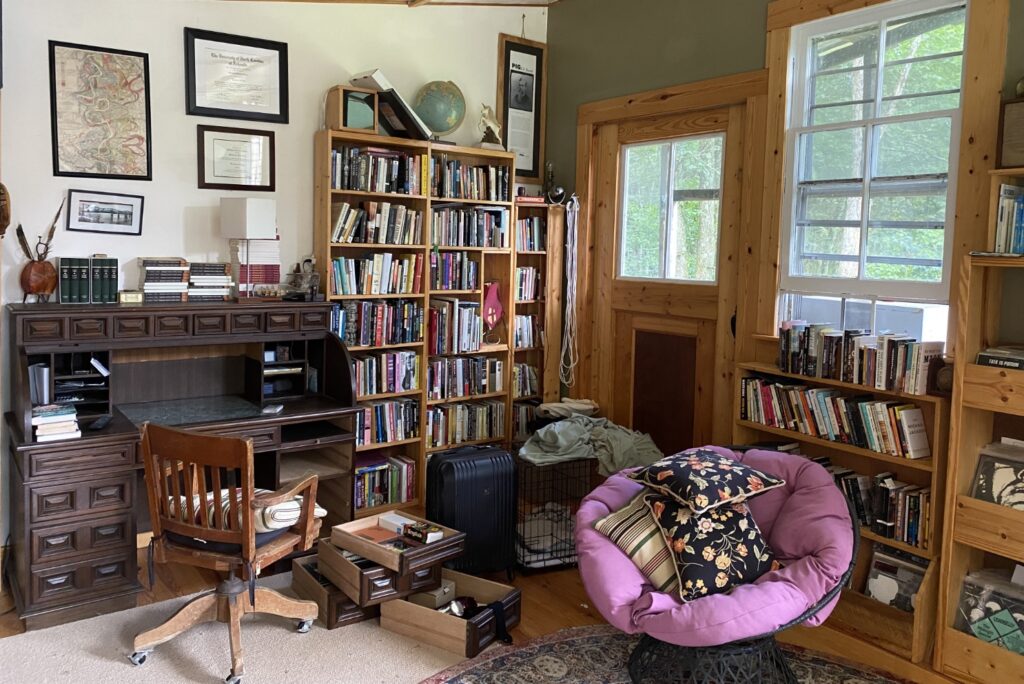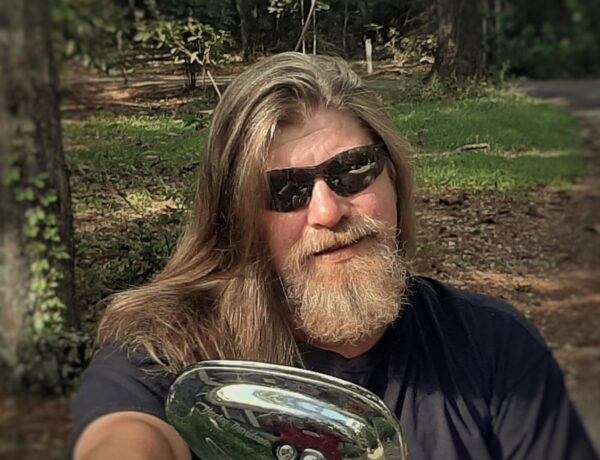Randal O’Wain holds an MFA from Iowa’s Nonfiction Writing Program. He is the author of Meander Belt: Family, Loss, and Coming of Age in the Working-Class South (American Lives Series, 2019) and Hallelujah Station and Other Stories (Autumn House Press, 2020).
His essays and short stories have appeared in Oxford American, Guernica, The Pinch, Booth, Hotel Amerika, storySouth, among others.
Each week, we publish a new daily writing routine from a famous author. Subscribe to our newsletter so you don’t miss out!
Hi Randal, great to have you on Famous Writing Routines. We’re really excited to talk to you about your writing routine and process. For those who may not know, can you please tell us a little bit about yourself?
I suppose to start with I have to say that I’m far from famous. Fame for most is the mirage one is offered when starving while lost in the forest, fame is the dream of water or cheesecake after days of starvation and thirst. I know writers that have been finalists for the Pulitzer Prize who still feel as if this word, fame, is an illusion.
I only say this because I fear most novice writers curious about routines suffer the same deprivation but do not know that it is elusive to 99%. And it is a deprivation, or rather it is a scarcity complex. Sometimes I am an optimist and I think there is enough room for all writers, but most of the time I scurry around in fear and hunger the way rats do where I am now living in Hell’s Kitchen. But this sense of deprivation is how and why I have a routine. I am afraid of dying alone in the wilderness and so just like the survivor I move forward.
And this movement has led me to great places. I graduated from Iowa’s Nonfiction Writing Program in 2015 where I wrote my first book. Meander Belt (Nebraska, 2019) is a collection of personal essays about growing up as a working class kid before and after the death of my father and older brother. Hallelujah Station was published the following year. I now teach creative writing to undergraduates at the University of North Carolina in Chapel Hill.
Can you talk about the different mindsets required for teaching writing vs. actual writing? For instance, John McPhee says he never does both at the same time, and that by taking a break from his writing to teach, it gives him energy to publish more work.
I love John McPhee. Have you ever read his essay In Search for Marvin Gardens? But, yes, I think about this balance a lot actually. I have some friends that refuse to teach because they say it drains their creative energy they need for writing. I don’t feel this way personally. My students at UNC Chapel Hill are so smart and motivated and they remind me regularly that writing is supposed to be fun and surprising.
I sort of wish I felt like I had the confidence to stop writing during the academic year, but I am dependent on my writing hours most days of the week. If I don’t sit down to work I start to lose contact with the idea or the motivation to finish a book. The effort begins to feel abstract if I don’t keep up my “practice” much the same as a bodybuilder who might fear losing muscle mass.
Can you take us through the creative process behind your debut short story collection, Hallelujah Station and Other Stories?
Hallelujah Station and Meander Belt are siblings. It was emotionally difficult for me to write narratively about grief and the death of the men who raised me. I would have to put the work aside often. In these moments, I turned to fiction where I could be more playful, silly at times, and work with humanity that was not my own.
There were perhaps fifteen or more stories that did not make it into the collection. I chose the stories that did eventually make the cut based on themes. Each character in Hallelujah Station is at an inflection point in their lives and the structures follow how these people work through their own crises. This way I could consider humanity from the place of vulnerability. I wanted to know how my characters would respond and work through moments in their lives once their sense of self had been permanently altered by life events.

What does a typical writing day look like for you?
I work every day. It is how I find my way as a writer. I sit down with coffee in the morning and read a book, often biographies or histories, until my imagination switches over to narrative and then I work until the real world slips back in.
Sometimes I get three hours. Sometimes only half an hour. But the practice of sitting down in the chair with full intention to work is all that matters. If nothing happens one day, I don’t sweat it because I know that something will happen eventually. If I never sit down in the chair then nothing will happen.
This is interesting to me because so much of the drive to put oneself through the act of writing a book that can take anywhere from 3 to 8 years to finish (a grueling experiment) is related to the wilderness, the scarcity complex, the sense of thirst but knowing (hoping?) that just around the bend there might be water. Fame isn’t the right word for this, but recognition might be.
I work in hopes that one day my work will be recognized and loved. This is a lot for the mind and heart to hold on to because it is as much a fiction as it is a psychological complex. LOL. For me, the act of writing is like seeking the love of a father or mother. It is an act of trying to find my way out of the wilderness into the joyous world of community and feasts and dance.
How did the COVID-19 pandemic and lockdowns affect your routine?
It didn’t. Not really. I was given more time to work than normal because the commutes and socializing of normal life were off the table. But I can’t say if that was a good or bad thing.
What does your writing workspace look like?
I live with my wife the novelist Mesha Maren in both rural West Virginia and in Durham NC. In West Virginia we have a separate building full of books, records, and stocked bar. That space is fun to research and edit in, but I often gravitate to an upstairs bedroom that has low ceilings and large windows where I work at a wooden artist easel and a ladder back chair. The monastic setting helps me to focus. But the music and booze helps me push forward with edits or revisions when I am way way way over the process of working on a certain book.

Before you go…
Each week, we spend hours upon hours researching and writing about famous authors and their daily writing routines. It’s a lot of work, but we do it out of our love for books and learning about these authors’ creative process, and we certainly don’t expect anything in return. However, if you’re enjoying these profiles each week, and would like to send something our way, feel free to buy us a coffee!



No Comments